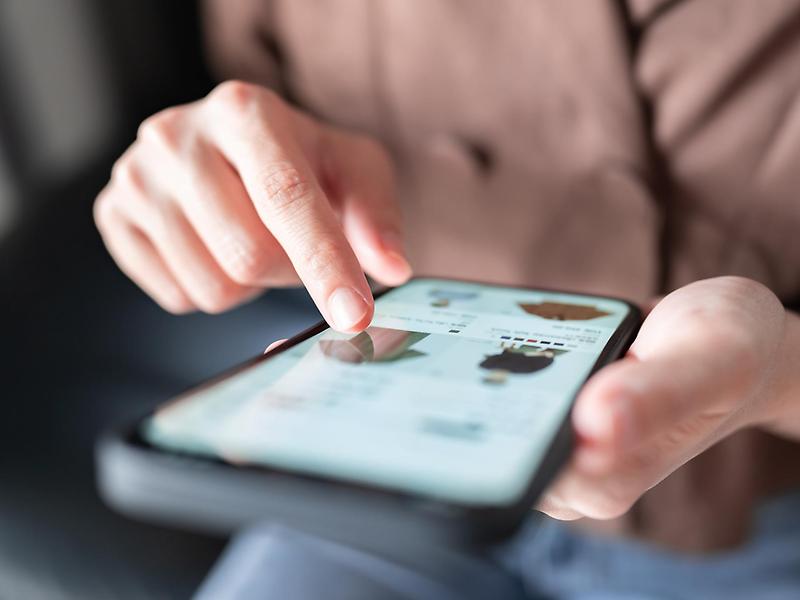14. July 2025 By Miriam Eckardt
Lead funnel – turning generated leads into new customers
Why digital leads must become valuable customers
For many companies, digital marketing is an effective tool for reaching specific target groups. But initial contact alone is not enough – it is too valuable to be left unused. The crucial question is therefore: How do interested parties become paying/interacting customers?
What is a funnel – and why is it so important?
The term funnel describes a process in which qualified leads are filtered from a large number of initial contacts, such as website visitors. The classic marketing funnel maps an ideal purchasing process: from the first contact with the brand to targeted marketing measures and the final purchase.
However, a funnel can be used not only in marketing; sales and customer service also benefit from structured user guidance. Depending on the goal, funnels can fulfil various functions, including newsletter subscriptions, eBook downloads or purchase completions. The underlying process remains the same, but the perspective varies depending on the department.
In this blog post, I will focus on the lead funnel, whose goal is to generate qualified leads, i.e. to motivate users to voluntarily provide their contact details.
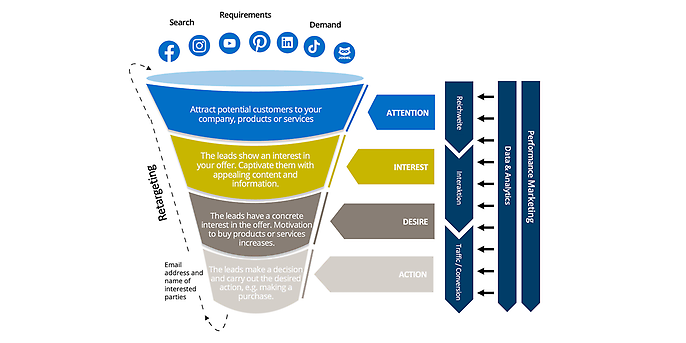
The lead funnel: Think holistically, act strategically
A successful lead funnel does not happen by chance. It requires a clear strategic setup, a well-thought-out customer journey and a cross-channel marketing architecture. Only through careful preparation can leads be acquired systematically and efficiently.
Modern online marketing is no longer just about the use of AI; the interaction of different AI technologies is crucial. Find out what integrated workflows look like and what exciting use cases they offer in this blog post on ‘How artificial intelligence will revolutionise online marketing in 2024’.
Kostenloses Whitepaper
Sales Funnel - vom Lead zum loyalen Kunden –
Wie gelingt es, Interessierte systematisch zur Kaufentscheidung zu führen? Und wie lassen sich Touchpoints entlang der Customer Journey effektiv gestalten?
In unserem Whitepaper zeigen wir praxisnah,
- wie ein moderner Sales Funnel aufgebaut ist,
- welche Kennzahlen wirklich zählen und
- wie Marketing & Vertrieb gemeinsam für messbaren Erfolg sorgen.
Jetzt kostenlos downloaden und Vertriebsprozesse zukunftssicher gestalten
Push vs. pull: two ways to generate leads
Pull marketing (inbound)
In inbound marketing, there is already a specific need. Users are actively searching for solutions, for example via Google. This is exactly where pull marketing comes in: tailored ads (such as Google Ads) and optimised landing pages target interested parties. Advantage: the most expensive part of the funnel, generating attention, is eliminated.
Limitation: Only offers with existing demand can be displayed. Push measures are also required for new products.
Push marketing (outbound)
Outbound marketing is all about generating interest first. Potential customers are approached via high-reach channels (e.g. LinkedIn, display ads). The more explanation a product needs, the more touchpoints are needed to build trust and generate leads.
adesso tip: The optimal combination of push and pull measures depends on your goals, budget and brand awareness.
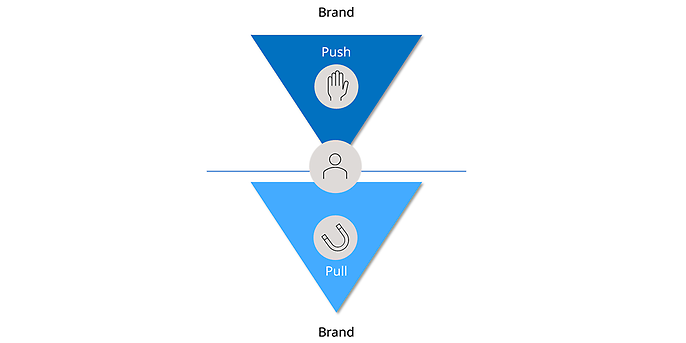
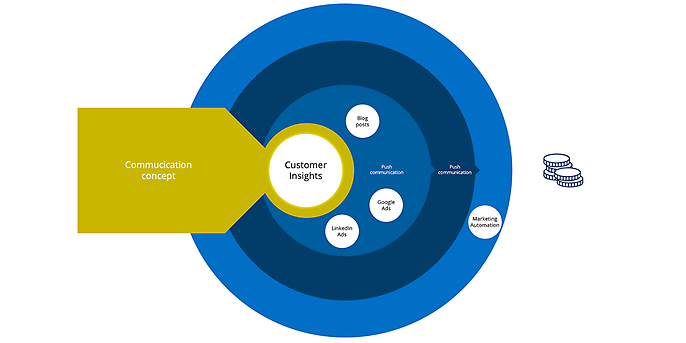
Who to address? Target group, user role and persona
Target
The target group includes all individuals or companies with common characteristics. Examples: managing directors, department heads, trainees.
User
A user role describes at what point and with what need a person encounters an offer. It is a contextualised intermediate step between the target group and the persona.
Persona
The persona is a concrete, fictional representation of a target group. It is described in detail: name, age, profession, values, digital maturity, etc. Personas are essential for precisely targeting content and advertising materials.
Customer journey – accompanying leads along their journey
The customer journey links the steps of the funnel with the customer's perspective. It shows which touchpoints (channels, content, messages) are crucial in each phase.
Example: Anna's journey through the lead funnel
1. Awareness
Anna notices in the morning that her bathroom light is broken. On her way to work, she Googles ‘warm light bulb’.
2. Interest
She discovers that dimmable light bulbs are available. Her search becomes more specific: ‘light bulb, colour adjustable, 27 mm socket’.
3. Decision
She compares suppliers. An advertisement promotes app control. The linked landing page offers reviews, details and downloads. Anna is convinced.
4. Action
She searches for the best price. A discount code for first-time buyers motivates her to sign up, turning a lead into a customer. The newsletter will keep her informed in future.
Touchpoints must be actively designed at every stage to identify needs, build trust and lead to a purchase.
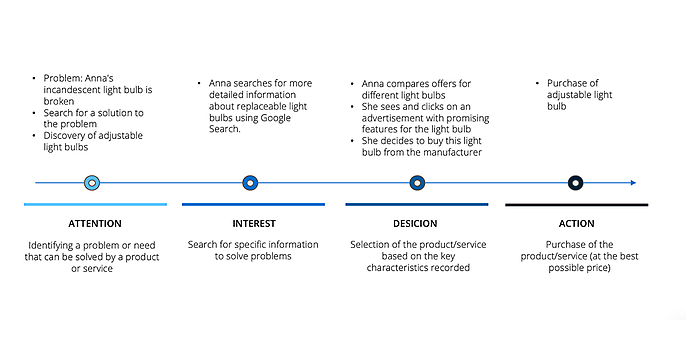
Transparency, measurability, scalability: the key to success
Each funnel stage is assigned clear goals and KPIs. This enables:
- Precise measurement of success
- Targeted optimisation
- Early identification of unmet needs
Pilot campaigns: start small, think big
Test campaigns offer the opportunity to test target group addressing and channel strategies in a cost-efficient manner:
1. Definition of personas
Who are we addressing? Which channels does this person use?
2. Ad design
Relevant content, clear USP, targeted call to action.
3. Landing page optimisation
The page must be tailored to the respective funnel phase and persona.
4. Retargeting
Non-converted visitors are targeted again, via pixel or email.
5. Evaluation & scaling
What works is reinforced. What doesn't work is optimised.
Conclusion
A strategically planned lead funnel enables you to turn interested parties into long-term customers – efficiently, sustainably and measurably. It is therefore a central component of successful marketing and sales work.
We support you!
Whether awareness, conversion or retargeting – we support you in turning digital contacts into real customers. With holistic funnels, data-based decisions and measures tailored to your individual goals.
